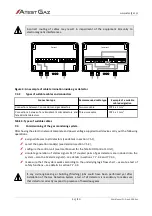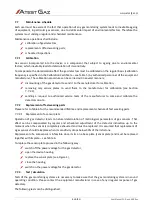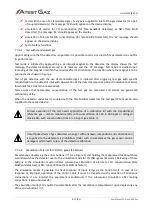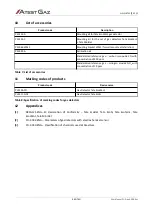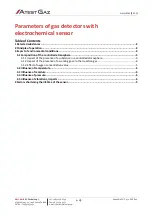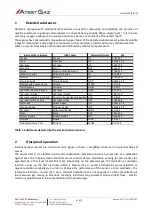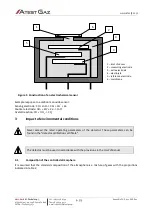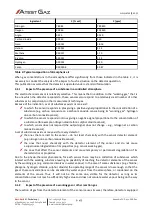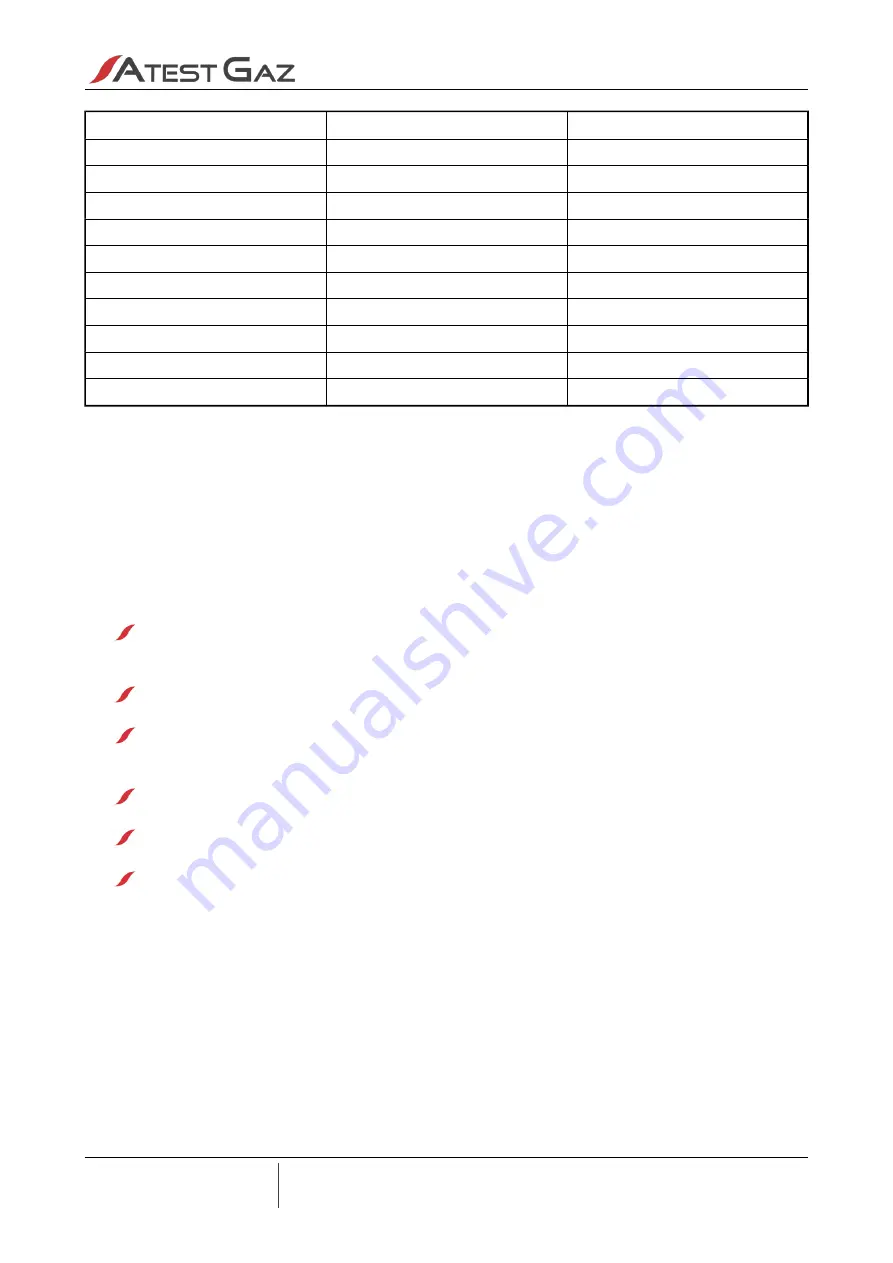
www.atestgaz.pl
Ingredient
C [% vol]
C [ppm]
Nitrogen
78.084
780 840
Oxygen
20.946
209 460
Argon
0.934
9 340
Carbon dioxide
0.0360
360
Neon
0.00181
18.18
Helium
0.00052
5.24
Methane
0.00017
1.70
Krypton
0.00011
1.14
Hydrogen
0.00005
0.50
Xenon
0.000008
0.087
Table 2: Typical composition of atmospheric air
When gas concentrations in the atmosphere differ significantly from those indicated in the table 2, it is
necessary to conduct the analysis of the impact of such a situation on the detector operation.
This publication assumes that the detector is operated under a standard formulation.
3.1.1
Impact of the presence of a substance in a controlled atmosphere
The electrochemical sensor is relatively selective. This means that in addition to the "working gas," that is
the one which the detector responds to, these sensors also respond to a relatively small number of other
substances in comparison to other measurement techniques.
Because of the indication, a set of substances exists or can exist:
to which the sensor responds
in plus
giving a positive signal proportional to the concentration of a
substance (e.g. carbon monoxide on a carbon monoxide sensor, being its "working gas", hydrogen
on a carbon monoxide sensor),
to which the sensor responds
in minus
giving a negative signal proportional to the concentration of
a substance (for example, nitrogen dioxide for a sulphur dioxide sensor),
to which sensor does not respond (the output signal does not change – e.g., nitrogen at a carbon
monoxide sensor).
A set of substances exists or may exist for every detector:
the ones that are inert to the sensor – do not react chemically with the sensor detector element
(e.g. nitrogen on a carbon monoxide sensor),
the ones that react chemically with the detector element of the sensor and do not cause
a supernormal degradation of its properties (e.g. sensor working gas),
the ones that affect the sensor elements and cause temporary or permanent degradation of its
characteristics or properties.
Due to the physio-chemical phenomena, for each sensor there may be a collection of substances which
interact with the working substance leaving no possibility of reaching the detector elements of the sensor
by the working gas (e.g. ammonia dissolves in water vapour). In the case of some substances (e.g. chlorine,
phosgene, hydrogen chloride, sulphur dioxide) the operating range of the sensor is low enough so that the
gas at these concentrations can be absorbed by water vapour from the atmosphere, or condensed on the
elements of the sensor. Thus, it will not be the same one, visible for the detector, as long as its
concentration does not reach a sufficiently high value and does not saturate water vapour being on the way
to the sensor.
3.1.2
Impact of the presence of a working gas or other reaction gas
The reaction of gas from the detector element of the sensor causes its wear, therefore, detectors equipped
Atest-Gaz
A. M. Pachole sp. j.
ul. Spokojna 3, 44-109 Gliwice, Poland
VAT No.: PL 9691433231
tel.: +48 32 238 87 94
fax: +48 32 234 92 71
e-mail: contact@atestgaz.pl
p. 4/5
Appendix: PU-Z-032-ENG R02
•



